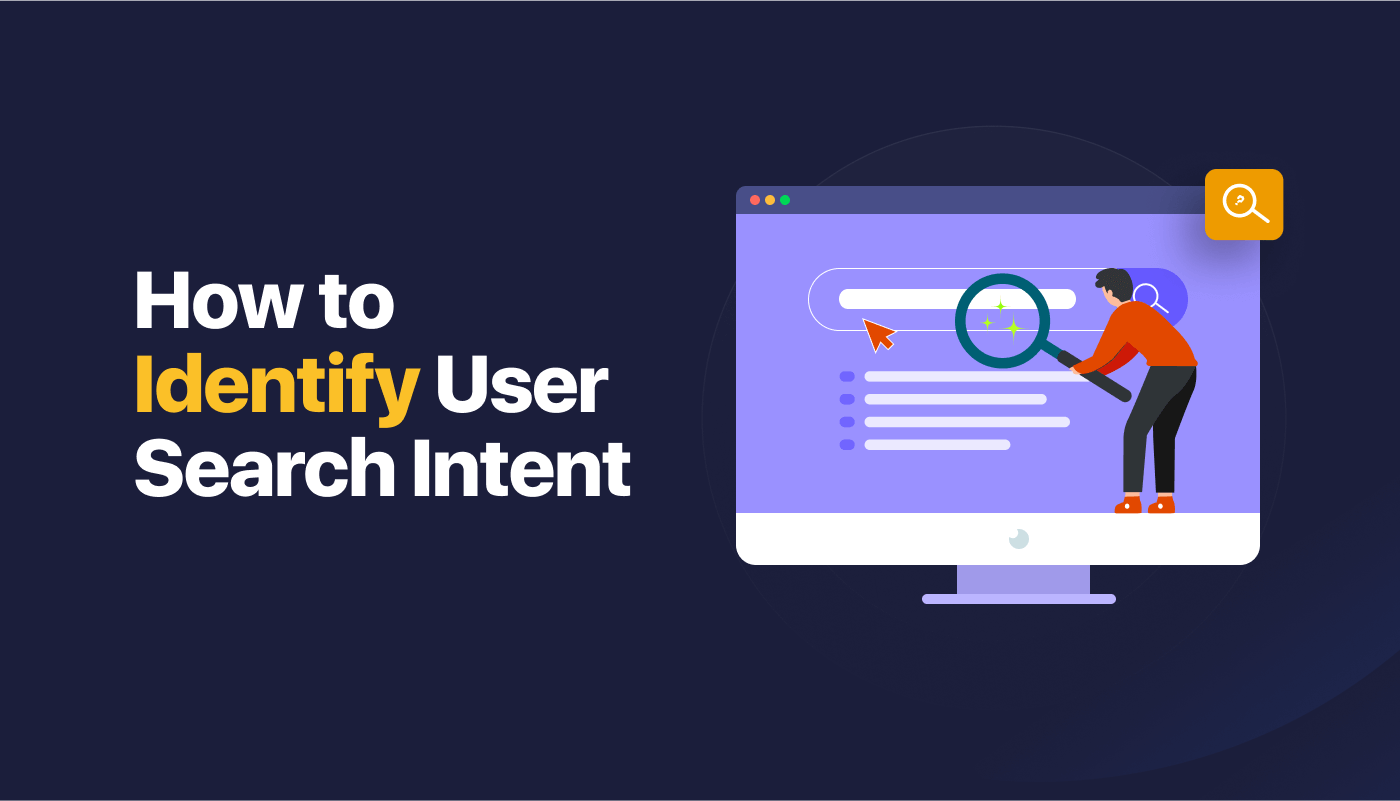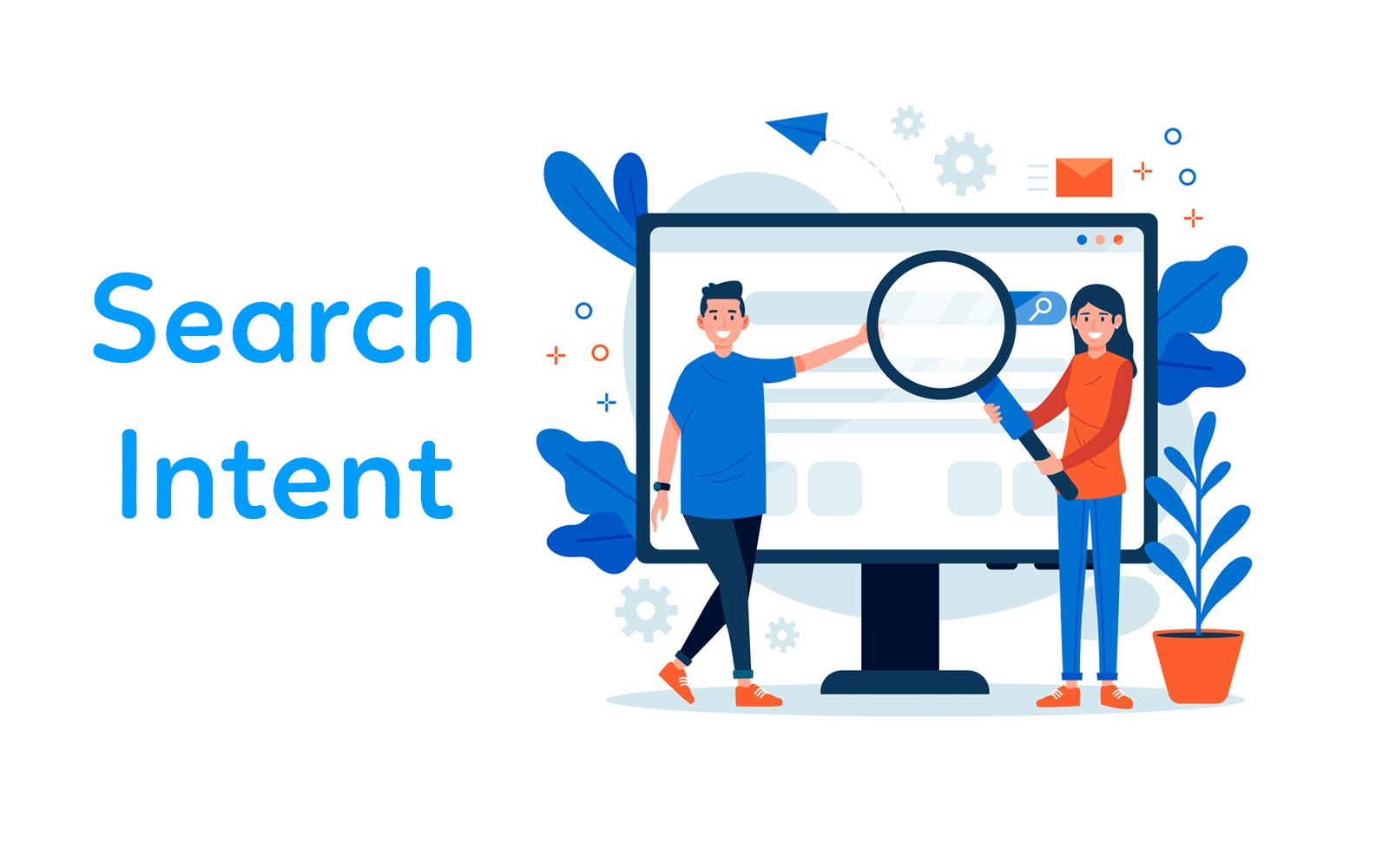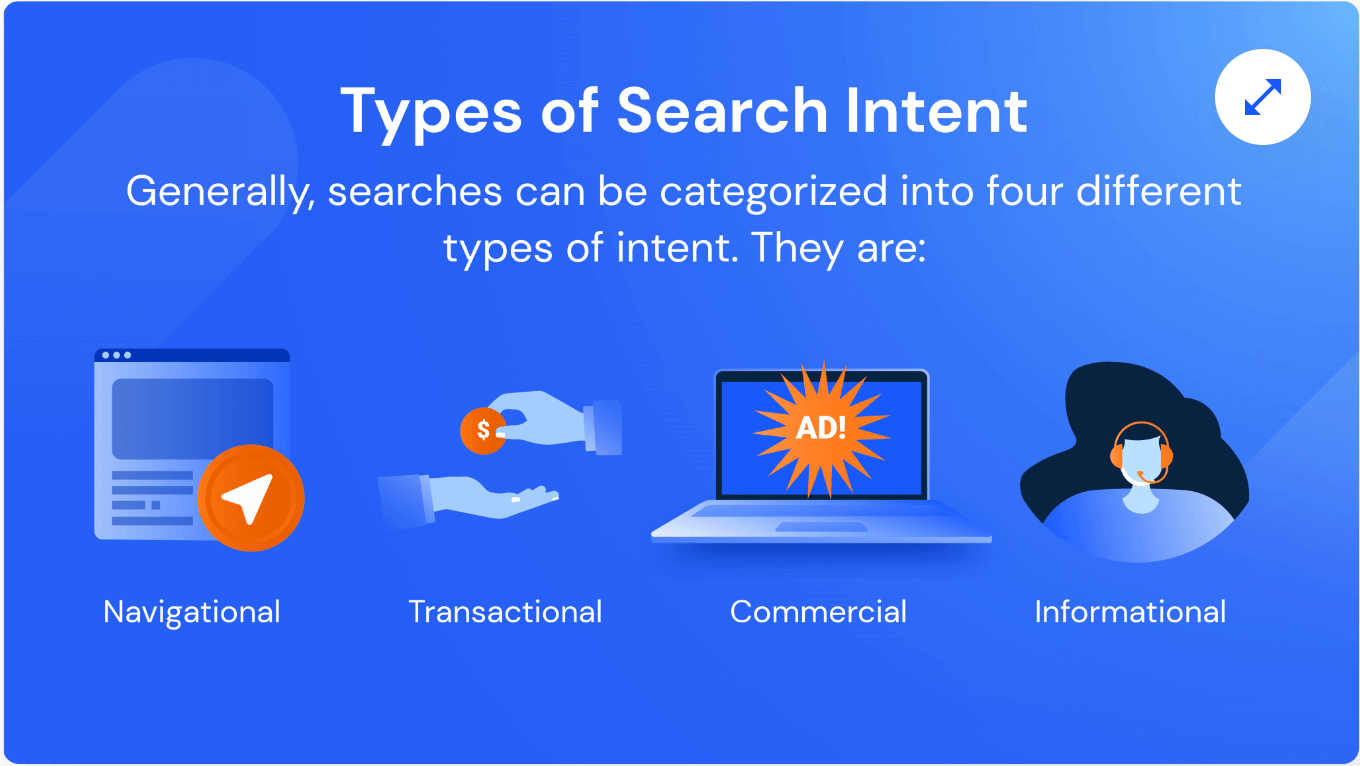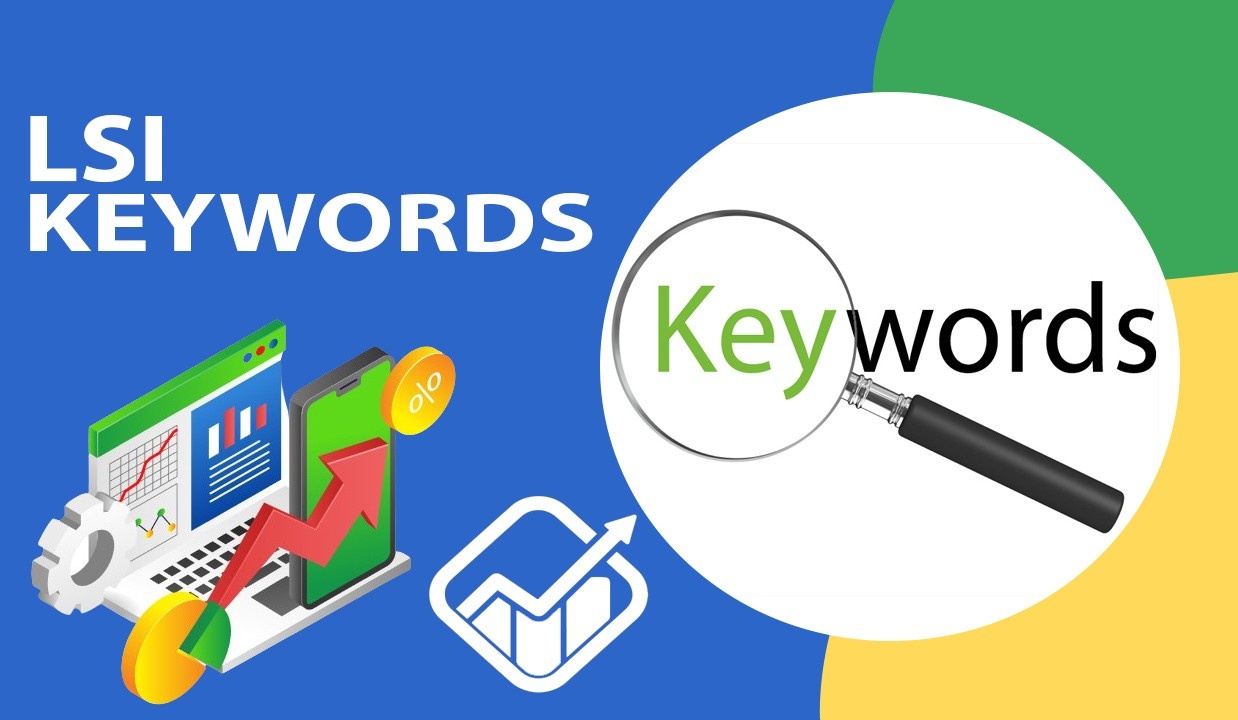
Crafting content that ranks well on Google while addressing your audience’s needs requires more than just keyword optimization. It involves understanding search intent, providing valuable insights, and creating an engaging user experience.Tips to help you create content that satisfies search intent and meets customer needs effectively.
What Is Search Intent?
Search intent, also known as "user intent," refers to the purpose or goal behind a user’s search query. Essentially, it explains why someone entered a particular query into a search engine and what they aim to achieve with it.
When users enter a search query on Google, they usually have a clear reason for doing so, and their satisfaction depends on how accurately Google interprets their intent and delivers relevant results.
In SEO, search intent is typically categorized into four types:
- Informational:This is one of the most common types of intent, where users seek information. They may be looking for answers to specific questions, guidance on solving a problem, or in-depth knowledge about a topic.
- Navigational:Users with this intent are trying to locate a specific website but may not remember the exact URL or find it quicker to search for it on Google.
- Transactional:This intent indicates users are ready to take a specific action, such as making a purchase or signing up for a service.
- Commercial Investigation:These users are considering buying a product or service but haven’t made a final decision. They’re researching and comparing options to make an informed choice.
Why Is Search Intent Important For SEO?
Getting noticed online goes beyond just using the right keywords SEO consists of various elements, and search intent is a key one. Why? Because Google focuses on delivering content that aligns with users' needs. In fact, its evaluator guidelines specifically address user intent, highlighting its importance. This makes it a priority for you as well.
Here are some advantages of integrating search intent with SEO:
- Crafting content that aligns with users’ needs increases your chances of ranking higher in search results.
- Producing relevant content helps you better connect with your audience, making it easier to attract leads, convert them into customers, and build stronger marketing strategies.
- Addressing search intent improves user experience when you provide what your audience is looking for, they’re more likely to see you as an authority and return for more.
How To Optimize For Search Intent?
- 1. Monitor SERP Fluctuations
- When using top-ranking pages to determine search intent, remember that rankings can change over time.
If you notice significant fluctuations among the top results over a six-month period, it may indicate that Google either struggles to understand the intent behind the query or that the intent itself is evolving.
In such cases, these fluctuating pages might not accurately reflect the true search intent.
- 2. Analyze Competitors
- Before creating new content or updating existing pages, take time to study what your competitors are doing.
High-ranking competitors have clearly mastered certain SEO strategies. Analyze their page structure, the topics they cover, their tone of voice, and most importantly identify gaps or weaknesses in their content.
Those gaps present an opportunity for you to surpass them in search rankings.
- Apply the “3 C’s of Search Intent”The “3 C’s of search intent” are content type, content format, and content angle. These help you understand search intent and optimize your content to align with it.
- Content Type:This refers to the kind of content appearing most in SERPs, such as blog posts, product pages, or landing pages.
- Content Format:This relates to the style of the content, like tutorials, reviews, comparisons, or listicles, seen in the top-ranking pages.
- Content Angle:This focuses on the unique selling point or perspective emphasized by top-ranking pages, revealing what users find most valuable for a specific query.
1. Understand The Three Types Of Search Intent
Before writing content, it's crucial to understand why users are searching. Search intent refersto the purpose behind a query, and it typically falls into one of three categories:
- Navigational: The user is looking for a specific website or brand.
- Informational: The user wants to learn more about a topic or find answers to a question.
- Transactional: The user is ready to take action, whether that’s making a purchase or signing up for a service.
By identifying the search intent behind your target keywords, you can ensure your content matches what users expect, increasing engagement and improving search rankings.
2. Conduct Targeted Keyword Research
Effective keyword research goes beyond finding high-volume keywords. You need to uncover search terms that align with user intent. Start by identifying long-tail keywords, which often capture more specific needs.
Tools like Google Keyword Planner, Ahrefs, or SEMrush can help you find terms that match both user intent and your content goals.
It’s not about stuffing keywords into your content but incorporating them naturally. Place them strategically in headings, meta descriptions, and throughout the body of your text to maintain a natural flow.
3. Create In-Depth, Value-Driven Content
High-ranking contentoften goes beyond the surface and provides comprehensive insights. Users want content that fully addresses their queries.
This means covering a topic from multiple angles, offering examples, and using data to back up your claims.
To create in-depth content:
- Break down your topic into smaller sections to cover it thoroughly.
- Add value by including case studies, data, and practical applications.
- Ensure your content answers every relevant question a user might have.
When users find all the information they need in one place, they are more likely to stay on your page longer, signaling value to search engines.
See Also: What Your Business Needs To Know About Client Retention
4. Optimize For Readability And User Experience
Readability plays a significant role in keeping users engaged. Long, dense blocks of text can overwhelm readers, leading them to leave your page.
- Using short paragraphs (2-3 sentences) to enhance readability.
- Breaking up content with bullet points, lists, and images.
- Organizing content with clear headings and subheadings that guide readers through the text.
A good user experience keeps readers on the page longer, reducing bounce rates and boosting SEO.
5. Support Your Points With Data And Examples
Content that demonstrates expertise and authority will always stand out. Use data, case studies, and expert opinions to reinforce your claims.
Not only does this build trust with your audience, but it also helps with establishing your content as credible and reliable.
For example, if you're writing about SEO strategies, including data from reputable sources or case studies showing successful SEO campaigns can greatly enhance the quality of your content.
6. Address Customer Pain Points Directly
Your audience is looking for content that helps them solve problems. Effective content should directly address their pain points and offer actionable solutions.
Use tools like Google’s People Also Ask, AnswerThePublic, and even social media platforms to identify common concerns and questions in your niche.
By solving real problems, you can build stronger connections with your audience and increase engagement. Be specific, and offer practical advice that readers can apply immediately.
You Might Like: Strategies To Maintain Customer Intimacy
7. Write Compelling Meta Titles And Descriptions
Your meta title and description are the first things users see in search engine results. This is your opportunity to attract clicks by writing concise, keyword-rich meta titles and descriptions that convey the value of your content.
- Include the primary keyword in your meta title.
- Highlight the benefit or key takeaway of your content in the meta description.
- Keep the title under 60 characters and the description under 160 characters to ensure they display correctly in search results.
Compelling meta tags improve click-through rates, which can positively impact your SEO performance.
8. Integrate LSI Keywords Naturally
In addition to your primary keyword, using LSI keywords (Latent Semantic Indexing) helps search engines understand the context of your content. LSI keywords are terms related to your main topic that provide additional relevance.
For instance, if your main keyword is "content marketing," related LSI keywords might include "SEO strategy," "digital marketing," and "blogging." Incorporate these terms naturally throughout your content to improve its contextual relevance without keyword stuffing.
Read Also: Which Keyword Intent Reigns Supreme? Decoding The Dominance
9. Keep Content Fresh And Updated
Search engines favor fresh content, so it’s important to keep your articles up to date. Regularly updating your content with new information, statistics, and trends can help maintain or even improve its ranking.
Schedule regular content audits to:
- Refresh outdated information.
- Add new insights or case studies.
- Re-optimize for new keywords based on shifting trends.
Keeping content current signals to Google that your page remains relevant, which can boost its search visibility.
Read Also: Which Keyword Intent Reigns Supreme? Decoding The Dominance
10. Include Clear Calls To Action (CTAs)
Every piece of content should encourage readers to take the next step. Well-placed Calls to Action (CTAs) guide users toward conversion, whether it’s subscribing to your newsletter, reading related articles, or making a purchase.
When writing CTAs:
- Be clear and specific about what action you want the reader to take.
- Use action-oriented language such as “Get Started,” “Sign Up Now,” or “Learn More.”
- Ensure the CTA aligns with the overall goal of the content and the search intent behind it.
Effective CTAs can drive engagement and help you achieve your content marketing goals.
Key Takeaways
Search intent is crucial for SEO because Google prioritizes delivering content that aligns with users' needs. Understanding search intent enhances the user experience and allows you to better connect with your target audience.
The four main types of search intent are navigational, informational, commercial, and transactional. By identifying the intent behind users' queries, your content strategy becomes more focused and effective. This enables you to target highly specific long-tail keywords that align with what your audience is searching for.
Optimizing for search intent involves refreshing content, targeting a broader range of keywords (without overusing them), and ensuring your calls-to-action (CTAs) are tailored to meet the needs of potential buyers.
FAQs About Customer Needs Search Intent
What Is Search Intent, And Why Is It Important For SEO?
Search intent refers to the reason behind a user’s query. Understanding search intent helps you create content that directly addresses what the user is looking for, which improves both engagement and SEO rankings.
How Can I Find The Right Keywords To Match Search Intent?
You can use tools like Google Keyword Planner, SEMrush, or Ahrefs to identify keywords that align with different types of search intent (informational, navigational, or transactional).
Why Is Comprehensive Content More Effective Than Short Articles?
Comprehensive content fully addresses the user’s query, providing all the information they need in one place. This increases user engagement and improves your chances of ranking higher in search results.
How Often Should I Update My Content To Keep It Relevant?
It’s a good idea to audit and update your content every few months to keep it aligned with current trends, ensure accuracy, and maintain high search rankings.
Final Thoughts
Creating content that satisfies search intent and meets customer needs is key to driving engagement and improving seo performance. by understanding your audience, providing comprehensive and relevant information, and optimizing for search engines, you can create content that not only ranks but also converts.





